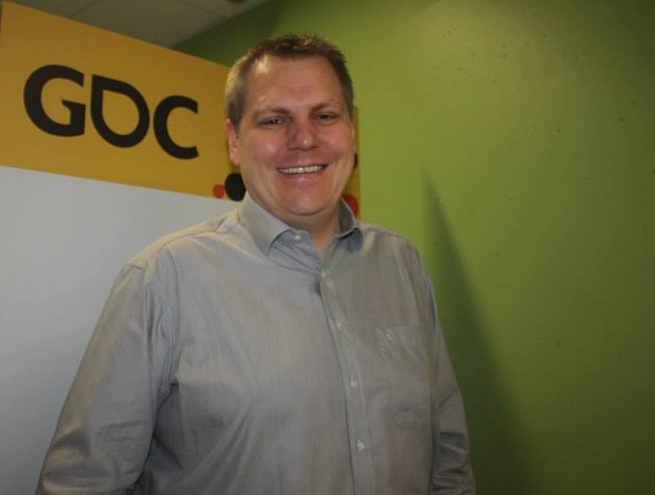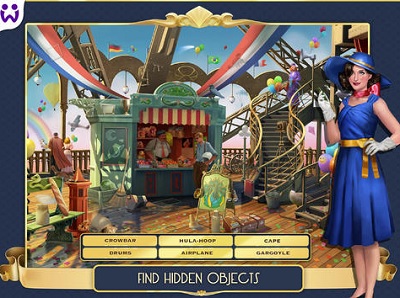GamesBeat: You could be releasing 250 Flappy Birds a year, right? How do you figure out how large your teams should be?
Begemann: It’s good for the App Store that you have these breakout hits, where a single person can create something that gets really big. It shows that the playing field is still level. But you can’t predict it.
What we see is that early in this stage, where you work on the prototypes, typically teams are around three people. You have a game designer, and engineer, and probably a third person. Sometimes they get bigger, but not much. That’s a size – two to five people – where you can spin out lots of ideas and change lots of things. You can go through a lot of prototypes within a couple of months.
Once the prototype is set and we say, “Okay, this is a game we want to produce,” we move to production, and those two to five people become seven to 10. That’s how big the team stays, typically, until soft launch. In some exceptional cases they get bigger, but usually they’re about that size.
GamesBeat: How do you deal with the risk that a game might not monetize? It could be popular, but it might not make money.
Begemann: We’ve understood free-to-play relatively well. The first key to free-to-play is keeping people in the game for a very long time – a year or more. Then, if you’re able to get people to play your game every day for a year, because you designed it in such a way that they can have fun playing for free, usually it’s clear what kind of additional monetization options you have to offer, so that people can also spend money.
Our focus is more on retention than monetization. Obviously monetization is also relevant. You have to do it to have a business. But the focus is more on retention and then monetization in the long term.
The third thing we’re doing at the moment is looking at Asia. We’re hiring, or in the process of looking for countrymen, for Japan. We believe Japan is an extremely attractive market. We see that our games get very positive feedback there. Jelly Splash has high ratings in the Japanese App Store. But we believe that to be successful there with future games, we need a person on the ground in Tokyo. We’re actively looking into that.
GamesBeat: And someday perhaps some kind of studio there as well?
Begemann: We don’t plan to do game development. It’s more about business development, partnerships, and marketing. That’ll be the focus for our person in Japan. The games we create, we aim to make them for as international an audience as possible.
I’m German, and we’re based in Germany, but most of our employees are not. More than half of our employees are from other countries. Every team, because they’re so international, such a mix of cultures, they don’t do games that just work for one culture. They do games that work pretty broadly, across many cultures.
GamesBeat: I’m curious as to whether there’s any particular middlemen in the industry that are useful to you, external partners of any kind — analytics companies or mobile-marketing companies, advertising networks.
Begemann: In terms of marketing and advertising, we work together with many partners. The most successful games spread by word of mouth, obviously, but you need to do marketing to fuel that growth and spur it on. We work together with maybe 15 mobile advertising networks, running ads there.
As far as analytics and understanding our users, we have developed a lot of tools internally. We believe that helps us to grow well, to have those tools in-house.
GamesBeat: Are you satisfied on that front, or do you think there are still some things that need to progress in that area? I hear it’s hard to tell which advertising networks are doing the best for you unless you get even more analytics involved to figure that out.
Begemann: We invest a lot into these internal tools. We have a number of engineers working internally on our analytics and marketing systems, to understand where we’re getting high-quality users from and where we’re not. If you’re an independent developer, or a smaller developer, it’s definitely important to track what you’re getting and see which tool providers can help you.
For us, because we started on Facebook and now we’re going to mobile, we have a few years of experience and also a few years of internal tool development. It’s always a challenge, but overall I’m happy about it.
GamesBeat: Are you excited about anything in particular as far as future developments?
Begemann: The transition to mobile has, I would say, been successful. Two years ago we had our first revenues on mobile. Now that’s 70 percent of our revenue. That shift took place while we were growing our revenue overall. I would say that’s successful. iOS and Android are the key platforms we’re developing for.
What I’m excited about is, in terms of genres, we’re going pretty broad. Last year we did a puzzle game and a hidden object game. Before that, we had Diamond Dash, which was a very fast-paced match three, and Monster World, a farming game. So we’re going broad in terms of genres. Although I talk about repeatedly creating hits, it’s not just about applying the same formula again and again. It’s about creating new franchises and making successful new titles in new genres.
I’m excited about the games we have in development. Most of them will probably launch in the second half of this year. We’re entering new genres where we haven’t gone before, including mid-core.
Beyond that, what we’re actively following are the new smart devices. I’m curious to see if smart watches will be successful. If they are, will they be a platform for games? What other types of wearable computing will be out there? That’s something we look at very actively. Right now, I don’t see a particular device that’s worth developing for. They’re all pretty small in terms of installed base. But we all know how fast that can change.
If one of those devices pulls ahead, we’d probably do a game jam. Every few months we do internal game jams, where people have three days to create new titles. That’s always a lot of fun, taking 72 hours to create a new game from scratch. We’ll try that once one of these new devices gets enough adoption, just to see what’s possible.
VentureBeat's mission is to be a digital town square for technical decision-makers to gain knowledge about transformative enterprise technology and transact. Learn More




